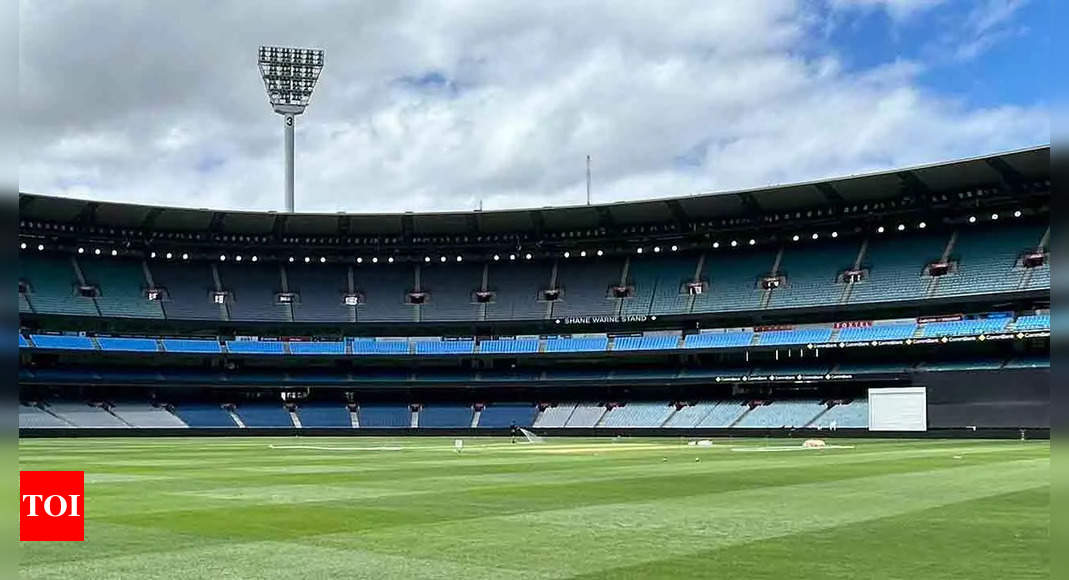
The repair of the Munak Canal, which suffered a breach on Wednesday night, is still going on. The stoppage of water caused a shortage in some parts of the capital. Delhi Jal Board officials confirmed on Friday that the breach had been sealed and there was no leakage now. But because the concrete layering of the Carrier Lined Channel was yet to start, the flow of raw water could not resume.
“Water is expected to be released into the canal by Saturday afternoon,” said a DJB official. “But that is only possible after the concrete layering is over. Haryana and DJB are working hard to fix the channel.”
Water minister Atishi said, “The 7-metre wide and 15-metre barrier was built with earth and is now being reinforced with concrete. The work will be completed by la te Friday night, but the concrete will take 5-6 hours to set.” She was optimistic that Haryana would release water into the Munak Canal from around 7am on Saturday: “It takes around four hours for water to reach Dwarka and water treatment will, thus, restart by 10am on Saturday.”
Dwarka has been worst hit by the water shortage. Against the usual capacity of 50 million gallons per day (MGD) there, production has dwindled to 14MGD. “There are around 350 housing societies in Dwarka and almost all are suffering because of the Munak Canal breach. There was sewage overflow in some areas too,” said Rakesh Gupta, president, Dwarka Federation of Group Housing Societies.
In Dwarka Sector 12, Geeta Sharma said, “We were facing a scarcity for the past few days and this has only worsened the situation. There is a severe shortage of water in our society and DJB of ficials informed us it would take two-three days for normal supply. Till then, we’ll have to buy water. The tankers are also charging a higher amount than usual.”
The Bawana and Nangloi treatment plants also couldn’t process enough water, impacting colonies in west Delhi. “There was no morning water supply today,” said Sanjay Gupta, chairman, Model Town Residents’ Welfare Association, on Friday. “In some pockets, there has been no supply since Wednesday. This is in addition to the problem of dirty and smelly water.”
On Friday, cumulative water production dipped significantly by 50MGD, with the total output standing at 907MGD against the average demand of around 1,290MGD.
“Water is expected to be released into the canal by Saturday afternoon,” said a DJB official. “But that is only possible after the concrete layering is over. Haryana and DJB are working hard to fix the channel.”
Water minister Atishi said, “The 7-metre wide and 15-metre barrier was built with earth and is now being reinforced with concrete. The work will be completed by la te Friday night, but the concrete will take 5-6 hours to set.” She was optimistic that Haryana would release water into the Munak Canal from around 7am on Saturday: “It takes around four hours for water to reach Dwarka and water treatment will, thus, restart by 10am on Saturday.”
Dwarka has been worst hit by the water shortage. Against the usual capacity of 50 million gallons per day (MGD) there, production has dwindled to 14MGD. “There are around 350 housing societies in Dwarka and almost all are suffering because of the Munak Canal breach. There was sewage overflow in some areas too,” said Rakesh Gupta, president, Dwarka Federation of Group Housing Societies.
In Dwarka Sector 12, Geeta Sharma said, “We were facing a scarcity for the past few days and this has only worsened the situation. There is a severe shortage of water in our society and DJB of ficials informed us it would take two-three days for normal supply. Till then, we’ll have to buy water. The tankers are also charging a higher amount than usual.”
The Bawana and Nangloi treatment plants also couldn’t process enough water, impacting colonies in west Delhi. “There was no morning water supply today,” said Sanjay Gupta, chairman, Model Town Residents’ Welfare Association, on Friday. “In some pockets, there has been no supply since Wednesday. This is in addition to the problem of dirty and smelly water.”
On Friday, cumulative water production dipped significantly by 50MGD, with the total output standing at 907MGD against the average demand of around 1,290MGD.







